Which do you prefer? Reality, or virtual reality? Your preference will most likely dictate which of these DACS you’ll pip for.
On paper, it’s pretty much unbeatable. Mine was originally made by ‘Mister X’ and bought second-hand, direct from USA. Once I’d paid the import duty it was a shade over £100 and £100 well spent.
They both have the same inputs but the DAC 3 only has RCA/phono outputs.
The AMB Gamma 2 is tighter, harder and brighter. It shines. It’s that 4K digital sound and a very good DAC and been in-situ for about half a decade in my system(s). Compared to other oversampling DACS it’s a more rounded sound but compared to the DAC 3… well that’s a different story.
I once fired up the AMB in a decent kitchen set-up and my friend’s house (my good friend, Mark Pollard to be precise, the slightly better of the two of us as DJing!) the system comprised a pair of AVI Neutron IIIs (on loan from me) powered by a TA2024 T-amp. His response. ‘#TMI’ we were hearing so much more information, he found it overbearing. To be honest, I do admire the detail this AMB can unearth but it can be to the point of being ‘clinical’.
So over to the Starting Point Systems silver box… On plugging in the DAC 3 via USB from a laptop, the first thing I noticed was it’s flat. This may sound like a bad thing, but hear me out… a computer screen is flat, a TV screen is flat, a window is flat. I suppose what I really mean is ‘neutral’. You don’t notice the screen or the window if it’s doing nothing. The DAC sounds like it’s just conveying music. It’s completely integrated and unfatiguing. It’s ‘music’, not ‘reformed music’, or ‘music HD’. And with that neutrality, emotion flows with atmosphere and a realistic soundstage.
I’ve listened to all sorts of music from AC/DC to ZZ Top, from opera to dubstep in the house and in the garage (home office).
The acid test…
It’s quite easy to immediately prefer the toy you’ve just bought, so I instilled my wife’s input. She has no axe to grind, well not with DACS anyway. In asking her opinion, all she knew was this means something to me, so I booked her in for a listening sesh, 1 track, 2 DACS. She chose the track: John Denver – Country Road.
She immediately picked out the DAC 3 as the better sound and therefore the winner. No contest.
The acid test 2…
How do they compare through a pro-audio DJ system?
To cut a long story short, the DAC 3 is better. Took it up to 103dB. Annoyingly, my pro-controller uses Wolfson DACS, partly chosen due to their natural sound, albeit not the top Wolfson chip but not much further down the range. Unfortunately, it’s not possible, as far as I know, to DJ going straight through to the DAC 3, or the AMB for that matter, since you can’t monitor the sound output before broadcast. An interesting test though.
History… what lead me to buy it?
One upon half a decade ago, I bought the AMB Gamma 2. I was using CDs less and less and wanted to recreate the fabulous sound of my CD player using my laptop instead. My brother had the same AMB DAC and when compared to his Bryson DAC using the same Wolfson chipset was pretty much indistinguishable in sound. Hence I bought the AMB.
But, there’s always a niggle… My CD player sounded better than either of them. It’s an Audio Note CD 2. This uses NOS DAC fed through a valve output and it’s sublime. It was also greatly improved on the advice of Peter Q by getting a New Old Stock Siemens valve for it. Best £30 I’ve ever spend on HiFi! So move on to Audio Note’s current ‘budget’ DAC and it had the Phillips TDA1543 chip used in NOS orientation and fed through a valve output stage. So the search for an affordable DAC, i.e. within MY budget, began.
Living with the DACs:
System matching…
They both look like hand-built projects, which is pretty much what they are. They are well-built and punch well above their weight for the price you’ll pay for them but they won’t win any awards for pretty. If there’s an award for portability or value they’d be up there.
Both cope with MP3 bitrates down to 128Kbps without sounding awful. Most of mine are 320Kbps with some FLAC and other lossless file types.
The AMB deals with headphones well, the DAC 3 doesn’t.
The DAC 3 is a more intuitive ‘plug and play’ and less sensitive to voltage irregularity. I feel this is, in part, due to the batteries which act as a kind of smoothing circuit.
I think the AMB looks better, especially in black but you should really be listening to the units rather than looking at them.
I don’t know how long the batteries will last with their USB charging and discharging but since they’re standard NiMH 9V (MN1604, PP3) I’m sure replacement would be a doddle.
If money was no object:
Dream on… but if I had endless wads of cash, I’d love to hear the Audio Note DAC 0.1x. I have a sneaky suspicion it’d beat these two but it is 10x the price.
I’d get some TDL Studio 1 floor standers or PMCs as my main set up, I’d try out the AVI DM5 with a sub-woofer and I’d have media server with more music on it, or at least put a high-capacity solid state HDD in my laptop.
(Since I wrote this article, I've actually bought a pair of TDL Studio 0.75 speakers. They are astonishingly good! I'll review them soon).
But, the money pot is small, hence opting for the Starting Point Systems DAC 3 in my quest for audio excellence at affordable prices.
I’ve yet to compare the DAC 3 with my Audio Note CD2. I have a feeling its ability to convey emotion behind the music will win but again that was £1000 worth of CD player and it just won’t do USB from my laptop, so convenience wins. So saying, I’ve not used my CD2 in 2 years!
Finally, I’d like to add that in certain circumstances my iPhone 6 Plus audio output is a more pleasant listen than the AMB. It’s nearer to the DAC 3 sound although it does have a somewhat rolled off top end. I’m lead to believe that iPhone use a separate DAC in their phones rather than an integrated one which may be unique and may explain their superior sound to most other mobile devices. So, if you have an iPhone, try it, you may be shocked at what it’s capable of. Chances are you’ll find it difficult to get hold of the AMB Gamma 2 if you fancy one but I’m led to believe the Cambridge Audio Dacmagic Plus uses the same WM chipset and sounds similar.
If I had to keep just one of the DACs, I’d keep the Starting Point Systems DAC 3 it really is rather good. Time will tell if I sell the AMB, but I think I’m keeping both… for now.
Systems used for testing:
Listening room:
Creek OBH-12 passive pre
TA2024 Helder circuit board T-amp x2 in bi-amp configuration, 12V 5A PSU
TNT-audio inspired ‘FFRC’ speaker cable
Shark silver interconnects with WBT terminals
Acoustic Energy AE1 MK2 with dedicated stands
Yamaha subwoofer
Virtual DJ Pro 7 software to USB from laptop for music files and iTunes.
Lounge:
Creek OBH-22 passive pre
TA2024 Helder circuit board T-amp, 12V 3A PSU
Monitor Audio 7 speakers
Atecama SE25 stands
Yamaha subwoofer
FFRC speaker cables
Shark silver interconnects with WBT terminals

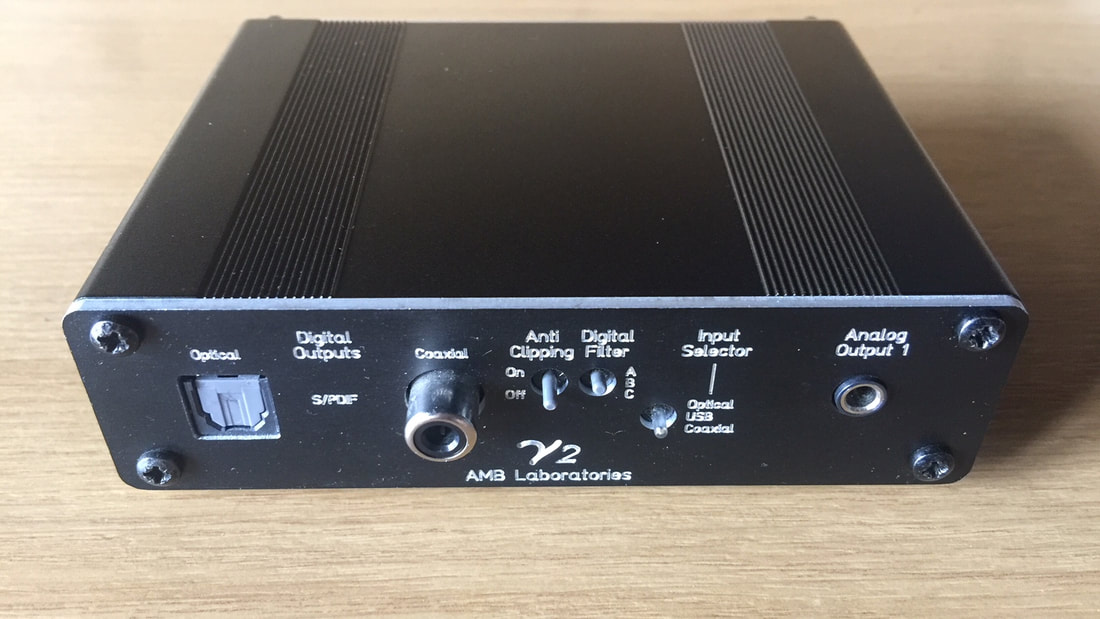

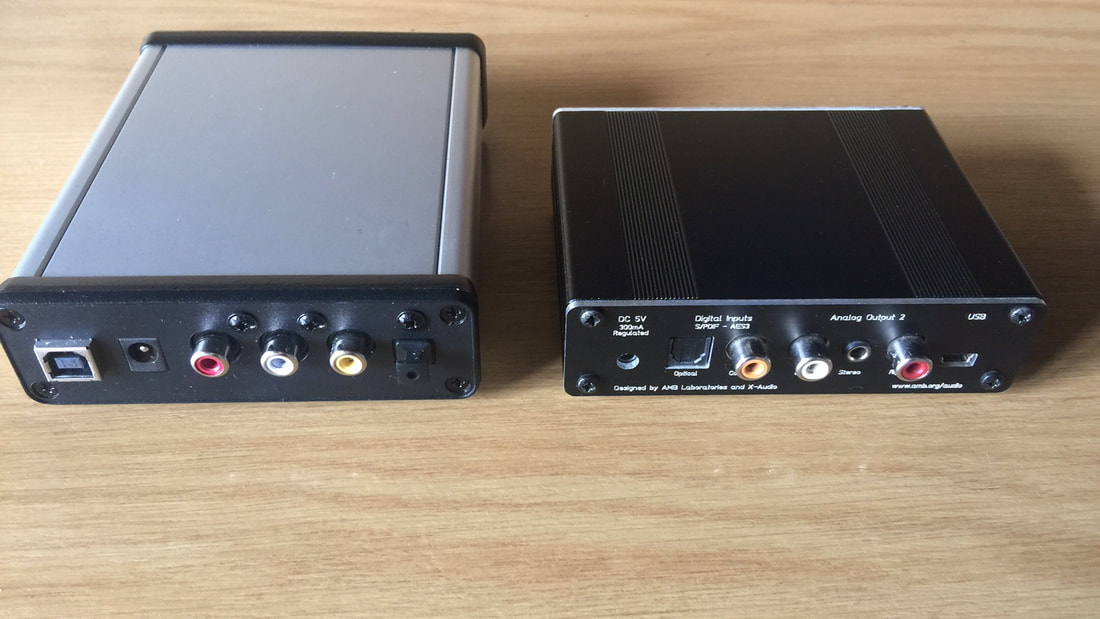
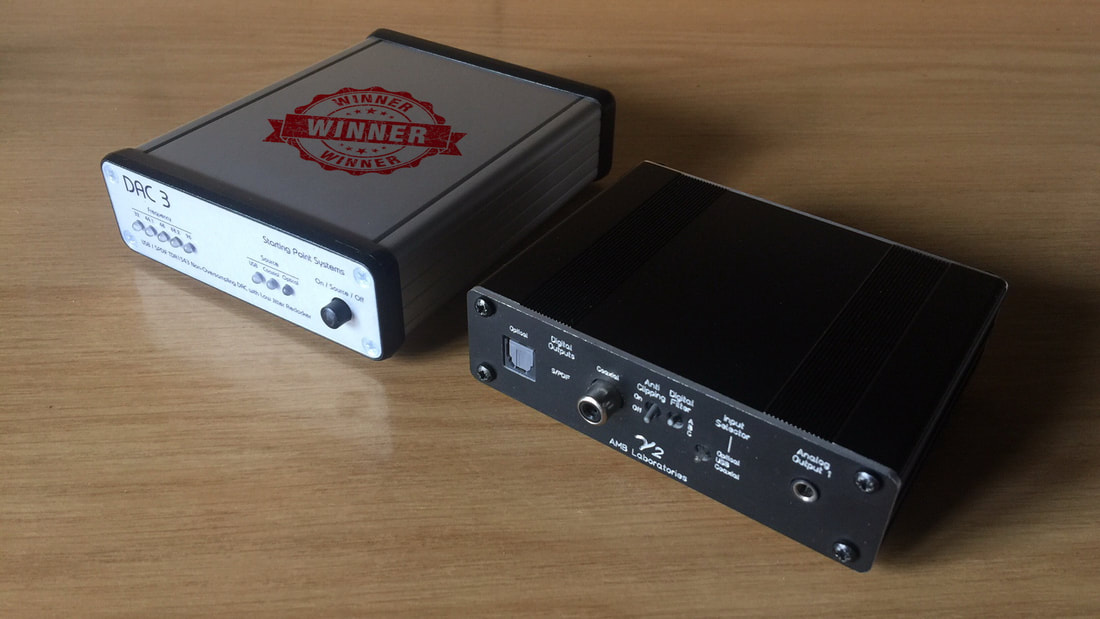
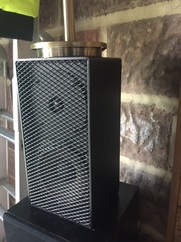
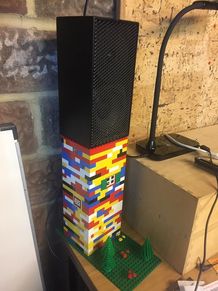
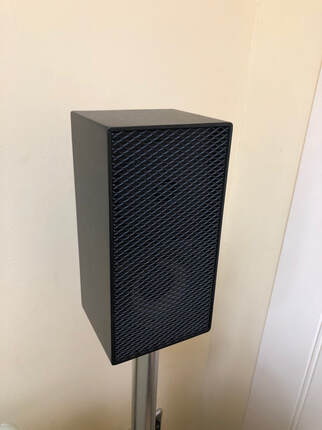



 RSS Feed
RSS Feed
